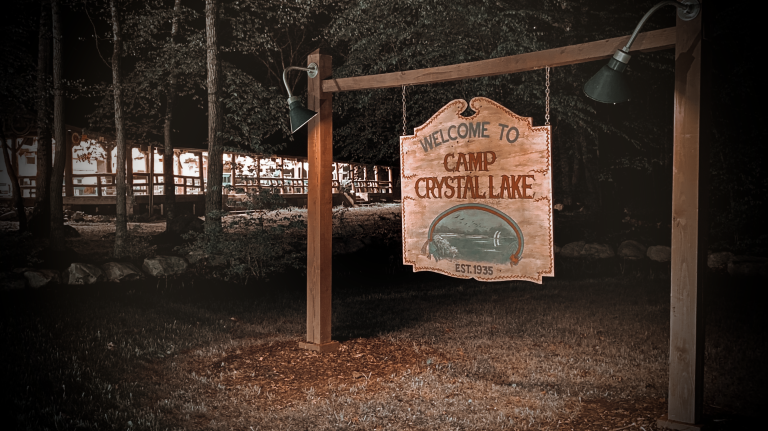Do Cats Live Nine Lives?
Of course, cats have just one life. This became apparent when Baldwin III, former Count of Ypres, made a game of flinging cats to their death from the top of a tower, and again when cats were persecuted alongside alleged witches during the Dark Ages, and yet again when the American Veterinary Medical Association published…

The idea that cats have nine lives comes from splintered origins, mostly rooted in religion and folklore. Nine — the trinity of trinities and a lucky number — is well suited to the cat, whose reflexes and agility allow it to escape from danger. Of course, cats have just one life. This became apparent when Baldwin III, former Count of Ypres, made a game of flinging cats to their death from the top of a tower, and again when cats were persecuted alongside alleged witches during the Dark Ages, and yet again when the American Veterinary Medical Association published a study stating that a cat’s terminal velocity is 53 MPH. Despite low body weight, tall tales, and a sophisticated vestibular system, cats do not endure the privilege or the nightmare of living multiple lives. Why we ever gave them so much credit, I don’t know. They’re just animals, same as us.
_____
I once owned a white shirt with blood-red letters that spelled out, “Prospect Park YMCA Day Camp.” I wore it twice a week, on field trip days, so that I wouldn’t get lost. Each Wednesday the entire camp took the Q train to Brighton Beach and each Wednesday I’d cringe, anticipating the metallic noise of my fingernails scratching against a tinfoiled lunch as I tried to ward off the countless grains of beach that threatened to invade my sandwich. I hated eating in the sun, the way the bread lilted and how the meat, gritty with sand, tasted warm the way a cold cut should never.
When it came time to swim, the camp’s staff would form a horseshoe in the ocean and the campers would swim inside of it, a sheltered cesspool where gratuitous youth was permitted, encouraged. And before I knew it one summer had burned into the next and I’d become part of the horseshoe: a link in the chain that kept children fenced in and safe from the tide. They would splash and scream and play Chicken and I wanted to warn them from my new vantage point, “Someday you’ll be standing in my place with no understanding of how you got here!” but instead I said, “Keep inside the horseshoe,” like someone else had told me once or many times before.
It’s funny or maybe it’s not: if I spend too much time thinking about it, I’ve been both the “me” in the horseshoe and the “me” in the cesspool ever since.
______
A cat’s purr is produced when the laryngeal muscles twitch at the rate of 25 to 150 vibrations per second (Hz), a frequency associated with increased bone density and other healing capabilities. Because they’re constantly purring — healing — it’s a popular notion that cats are well suited to survive physical danger: their inner strength multiplying with every purr, their time on earth expanding a proverbial nine lives.
A common misconception about cats, though, is that purring is always celebratory, reserved for cuddles and kibble and scratches behind ears. Cats are just as likely to purr when upset, irritated, frightened, injured, dying. To the world they are content; inside they are dying. Who wants to live nine lives under those conditions?
_____
Ace bandages were a staple in my wardrobe, for a while. I dressed my wrists in them; fashion-forward flesh-colored accessories that dared an adult — any adult — to ask a question, to worry. No one ever did. Sometimes I’d carve entire words: robotic and rigid lines that looked foreign against the familiar scrawl I knew to be my penmanship; the artfully dotted i’s and the flourished, dramatic descenders on y and j replaced by squared, soulless hieroglyphics. Knives are inflexible, hard to maneuver, not meant to record history on flesh.
The thing I never knew about that little person at the time — the frail person who kept a blade stashed beneath her bed and who wore long sleeves in the winter and retired from mutilation in the summer; this slight person who was not moved by the sight of blood and who sliced “the wrong way” because this wasn’t about dying, usually — was that she was never alone as she thought she was. There were troves of brittle and destructive girls tucked away in their self-made closets, cutting or purging or drinking or f-cking and had we all known about each other back then, if we’d have known we could just talk to each other about these things; well, maybe we wouldn’t have to talk about them now.
______
While away at college I received a phone call from my parents. They rang to tell me my cat Nancy had gone missing. I knew Nancy would hide when she was going to die, head under the porch or into the backyard or someplace quiet where someone like me wouldn’t find her. This was the kindest thing she could’ve done, I thought, one last act of good will after 16 years of companionship. I remembered her curling up in the nook of my knee as I slept, her sandpaper tongue, her regenerative purr that found its way to me when I cried about any and every thing as I’m wont to do. What didn’t come to mind was the time I woke up to a bloodcurdling scream she’d elicited from the pet hamster she’d determined to eat; or the times I flung pitiful fists onto my brother as he grabbed her by the scruff and insisted it was “natural this way” and “what the cat wanted.” I’d forgotten the times she’d drawn blood, protracted her claws and dismissively pushed my chest the way a man who doesn’t love you anymore might. As the dormant memories resurfaced, I thought it possible that Nancy had lived multiple lives: maybe not nine, maybe seven like Arab and Turkish culture dictate. I became more convinced of this when she returned home a week later, matted and hungry but alive by anyone’s standards.
_____
I wonder how we’d explain the suggestion that humans have nine lives. One explanation could be that humans are able to walk away from a person they once loved and begin again as though nothing ever happened, with their blank minds and their starving arms and their watering mouths ready to lick, kiss, drink someone new. Another might be that humans can revisit a journal or a photo album or a mirror and fail to recognize themselves in it; they’re able to forget 50 years of marriage, the names of their grandchildren, how they woke up one morning prisoner to a stark white room, a stark white caretaker. Humans possibly live several lives because instead of growing up they grow away; away from who they were, away from the pale child coated in sand and the one standing in the horseshoe; away from the girl wrapped up in the bandages and away from the teenaged body whose actions knew no consequence. They grow so distant that the old self becomes unrecognizable, a rearview mirror reflection that shrinks and shrinks until it’s so small it’s abstract, then microscopic, then nothing at all.
Those are just a few theories. ![]()




